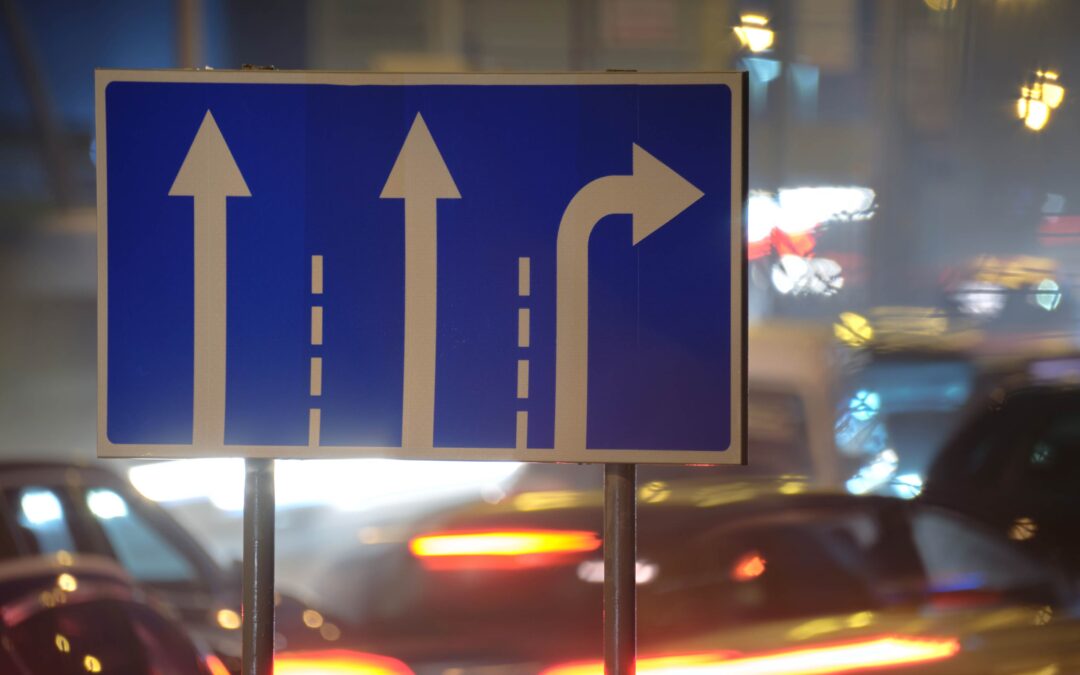On Upbeat Assessments of Giving, Comparisons to the Past, and the Realities of the Current Moment
As the COVID-19 pandemic rages on, the challenges for nonprofits — especially those working with the hardest hit — will only intensify. This seems obvious.
But recently I’ve been struck by some rather rosy assessments of the philanthropic response to date — assessments that make it sound like all will be fine. I worry that these analyses, which I think are contradicted by the available facts, will obscure the realities of the suffering on the ground and the tremendous need for dramatically increased giving.
If you read this blog regularly, you know I’ve been beating the drum — along with my colleagues at other philanthropy-serving organizations — for foundations to step up giving from previously budgeted levels. I am pleased some have, and I hope many, many more will. But today I want to focus on individual giving — and in particular on the need for donor-advised fund (DAF) holders and the institutions that provide them to step up. And step up big.
My view is that now is the time for DAF-holders and DAF-providers to show their mettle. (Again, like private foundations, some have.) DAFs are, in general, not the evil tools depicted in the caricatures of various critics. But we nonetheless can and should ask them to rise to the challenge of the current moment.
(It is worth acknowledging that there are specific examples of DAFs being used in ways that impede transparency, sometimes to mask support for odious groups. This long piece by Jane Mayer in the most recent New Yorker offers up one such instance, involving the philanthropic efforts of Ronald Cameron, owner of chicken-producer Mountaire and a major supporter of President Trump.)
Rose-Tinted Glasses
Looking at some of what’s being written, it would be understandable to think that perhaps the overall philanthropic response to the current crisis has already been sufficient — that all is well. But those analyses draw too heavily on longitudinal trends and historical analogies. I worry this tendency to compare to the past, which makes sense in “normal” times, may obscure more than elucidate. After all, we haven’t seen in recent decades anything remotely like what the country is facing right now.
For example, in an op-ed last month in USA Today, Una Osili and Patrick Rooney of Indiana University Lilly Family School of Philanthropy note that “there is a tremendous outpouring of generosity” during the COVID-19 pandemic. They say this response provides “reason for hope.” But I think it’s actually not yet clear how “tremendous” the response is in aggregate, especially relative to the magnitude of the challenges confronting nonprofits and the people they serve.
Osili and Rooney base their optimism both on anecdotes of donors stepping up recently and on research looking back that “shows that Americans respond generously to crises” such as 9/11 and hurricanes. They also rely on what strikes me as an overly positive take on the response of individual givers to the Great Recession, noting that “although the percentage of households that gave to charity declined during the Great Recession, those that continued to give donated approximately the same dollar amounts as they had before the recession.” To me, this glosses over the significance of the steep drop in percentage of U.S. households giving that they reference (and that their own institution’s research has documented).
Osili and Rooney are scholars I respect very much. I share their belief in the importance of philanthropy, and I really want to share their optimism, too.
But I am not sure the historic analogs they cite, even if looked at soberly, are useful in a moment like this, in which the term “unprecedented” feels like a massive understatement. I worry that their argument obscures the scale of the obstacles nonprofits face — which we’re only beginning to understand — and could lure people into a false sense of confidence that the philanthropic response is already sufficient to the challenge at hand.
Flawed Logic
I had the same feeling, but even more so, reading a strangely upbeat report released last month by Fidelity Charitable and an equally glossy New York Times article largely focused on that report. The article declares in its sub-headline: “Giving has surged during the coronavirus crisis, eclipsing donations during the 2008 recession and after the Sept. 11 terrorist attacks.” The article bases this conclusion on the Fidelity Charitable report, which analyzed giving from its DAFs, as well as an analysis of giving from DAFs at a group of community foundations.
But total giving from DAFs was $23 billion in 2018, according to the National Philanthropic Trust (NPT), compared to more than $427 billion in total giving that year. (Looked at another way, contributions to DAFs represented 8.6 percent of total giving or 12.7 percent of individual giving in 2018, according to NPT.)
However you look at it, analyzing those slices of DAF philanthropic activity is a long, long way from drawing a general conclusion about the whole giving pie. And not only that, we should expect that DAF giving would be responsive in a way checkbook giving wouldn’t, given that the funds are already committed and waiting to be allocated. It doesn’t affect a donor’s household income statement to make a DAF disbursement from a fund established and funded years prior, when times were better. You can’t get money back from a DAF.
Indeed, the reality that donors receive a tax benefit from a gift in year one, but might not disburse all the funds for years or decades to come, has been the basis for vigorous critiques of DAFs, such as those articulated in this recent Washington Post article. At the same time, others (myself included) have noted that DAFs grant out at a much higher average rate than foundations — and that, like foundations, they are well positioned to be countercyclical forces for the very reason that a gift to a DAF and a gift from a DAF are separate events, occurring at different moments.
The Fidelity Charitable report states, “In the first four months of the year, donors nationwide recommended 544,000 grants totaling $2.4 billion — an increase of 16 percent from the same period of 2019.” The report frames this in entirely positive terms, noting that “donors in all regions of the country accelerated their generosity.” (A Fidelity Charitable executive tells me that, as of July 15, the year-to-date increase is now 19 percent — excluding one outlier gift from last year — to the tune of $3.8 billion, with a 32 percent increase in grant volume. Numbers of grants per account, she said, are up 12 percent.)
In my view, a 16 (or 19) percent increase in DAF giving is not a cause for celebration in 2020. (In fact, it pales in percentage terms to an 80 percent increase, admittedly in a much smaller sample, at 32 community foundations during March and April, according to the Community Foundation Public Awareness Initiative. In fairness to Fidelity Charitable, their increase would likely have been bigger if just those two months were analyzed in their study.)
Rather, the more apt comparisons are to the $121 billion in total assets sitting in DAFs and, most crucially, to the needs of nonprofits doing vital work right now.
Nonprofits’ Brutal Reality
The data is clear about what nonprofits are facing right now. When CEP surveyed leaders of a representative set of nonprofits that receive at least some foundation funding in May, what we found, which was generally consistent with other surveys of nonprofits in recent months, was sobering, to say the least. Almost 90 percent of organizations said the pandemic was having a moderate or significant negative impact on them. The numbers were especially high for direct service organizations:
- Fully 80 percent said they had or would need to draw from reserves;
- Sixty-two percent said they had or would need to reduce staff hours, wages, or employee benefits; and
- Forty-nine percent said they had or would lay off or furlough employees.
More than 40 percent of respondents said they had seen a decline in gifts from major donors and more than half reported a decline in gifts of $7,500 or less, seemingly belying the conclusion of the Times article. For those organizations with earned revenue streams, the picture was bleaker still, with 77 percent reporting decreases.
Many nonprofits face the twin challenges of decreasing revenue and increased demand for services — fully 55 percent report stepped-up demand. That number is higher still for those serving historically disadvantaged communities and populations — the very people hardest hit by COVID-19. Long-standing systemic racism and structural inequities have made Black, Latinx, and Indigenous communities most likely to contract COVID-19, be hospitalized from it, and die from it. These populations are also disproportionately suffering from the economic crisis stemming from the pandemic.
Feeding America estimates that more than 54 million people may experience food insecurity in 2020, including a potential 18 million children. Existing disparities aren’t just being exposed more fully by this crisis, as many have noted. Indeed, they’re being deepened and exacerbated in ways that could last generations.
The stakes could not be higher, and the human consequences are extraordinary. So should be the philanthropic response.
We should resist the temptation to see even significant increases in giving from last year as sufficient, or to draw too many conclusions from philanthropy’s responses to other downturns or disasters. Because they don’t compare to this one.
Now is the Time
Again, DAFs are not in general the nefarious vehicles of the ultra-rich they have sometimes been made out to be, though they (along with foundations) have obviously been used in some specific instances in ways I find deeply troubling. The reality is that many DAF providers have minimum thresholds for establishing accounts as low as $5,000. DAFs are held by a diverse array of regular people (as well as some really wealthy ones) who want to give back for all the right reasons. Hundreds of thousands of Americans use DAFs because they’re a convenient and accessible way to manage their charitable giving.
But now is the time for those entities that offer them, whether community foundations or national gift funds, to do everything in their power to encourage donors to step up — including in some cases tightening and making more transparent their minimum payout requirements.
Many are working to cajole their donors to do more and I hope they continue. And there are various pledges such as #HalfMyDAF pushing donors to grant out money more aggressively.
But I’d suggest that not all DAF providers have been as assertive as they could be about the need for unprecedented giving to match unprecedented challenges. And I’d include the massive Fidelity Charitable in that category, at least judging by their report and quotations in the New York Times and Washington Post articles I mentioned.
Now is the time for leadership. None of us will look back at this time and wish we did less. As Silicon Valley Community Foundation President Nicole Taylor put in April, “The money’s already there to give. So let’s give it.”
After all, what better way for DAF-providers to silence their critics than for DAFs to be the philanthropic heroes of 2020?
Disclosure: CEP received $350,000 from the Fidelity Charitable Trustees’ Initiative in 2019 that supports our 2020 efforts to provide resources to individual donors. CEP also works with many community foundations as assessment and advisory services clients and receives some small grants from several.
Phil Buchanan is president of the Center for Effective Philanthropy (CEP) and author of Giving Done Right: Effective Philanthropy and Making Every Dollar Count, published by PublicAffairs last year. Follow him on Twitter at @philxbuchanan.


